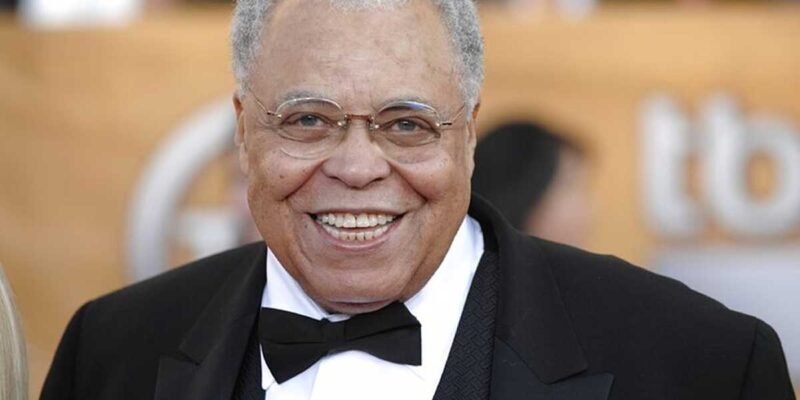Hollywood mourned the loss of one of its most distinctive voices when James Earl Jones died on September 9, 2024, just months before what would have been his 94th birthday. The man whose deep baritone brought Darth Vader to life left behind more than just memorable performances—he accumulated a James Earl Jones net worth of $40 million through decades of strategic career choices.
Jones’s financial legacy tells a fascinating story of missed opportunities and smart decisions. While his $40 million fortune places him among successful character actors, industry insiders know it could have been much larger. One early career choice involving a certain space opera would haunt him for decades, though he never let it define his approach to building wealth in entertainment.
James Earl Jones Net Worth Breakdown
When financial experts analyze the James Earl Jones net worth of $40 million, they point to a career built on consistency rather than blockbuster paydays. Unlike A-list stars who commanded eight-figure salaries for single films, Jones accumulated wealth through what industry veterans call “the working actor’s approach”—steady, diverse income streams over seven decades.
His wealth distribution reflected the changing entertainment landscape he navigated. Film work provided the foundation, but television residuals, voice acting royalties, and commercial endorsements created the steady cash flow that wealthy actors depend on. Broadway may not have made him rich, but those Tony Awards opened doors to higher-paying Hollywood opportunities.
What makes his $40 million particularly impressive is the era factor. Jones built this fortune during times when African American actors faced significant barriers to the highest-paying roles. His success required not just talent, but business acumen and the ability to recognize opportunities others might overlook.
Early Life and Career Beginnings
James Earl Jones was born on January 17, 1931, in Arkabutla, Mississippi, during the height of the Great Depression. His early life was marked by significant challenges that would later shape both his character and his distinctive speaking voice.
When Jones was just six years old, his family moved to Michigan, where he was raised by his grandparents after his father left to pursue a boxing career. The traumatic experience of this family separation triggered a severe stutter that would plague Jones throughout his childhood and adolescence.
The stutter was so debilitating that Jones remained largely silent during his school years, communicating with teachers primarily through handwritten notes. It wasn’t until a high school English teacher encouraged him to read his own poetry aloud that Jones began to overcome his speech impediment and discover his natural talent for oration.
This early struggle with communication would prove to be a defining factor in Jones’s later success. The effort required to overcome his stutter gave him an unusual awareness of vocal technique and breathing that would serve him well in his acting career.
The Star Wars Decision That Cost Him Millions
Every actor has that one story about the role that got away, but James Earl Jones lived with a decision that cost him a fortune. In 1977, when a young filmmaker named George Lucas called about voicing a villain in some space movie, Jones faced a choice that would become Hollywood legend.
The offer seemed straightforward enough: voice the bad guy for $7,000 cash, or take a gamble on something called “profit participation.” Jones, strapped for cash and needing grocery money, didn’t hesitate. Seven thousand dollars was real money—enough to cover rent and put food on the table. The space movie? That was just another job.
Nobody could have predicted what happened next. “Star Wars” didn’t just succeed; it exploded into a cultural phenomenon that redefined entertainment. That first film alone pulled in $775 million worldwide, making it one of the highest-grossing movies in history. Meanwhile, Jones watched from the sidelines as his quick $7,000 decision turned into what he later called his “tens of millions of dollars” mistake.
The real kicker came when details emerged about Sir Alec Guinness’s deal. The veteran British actor, equally skeptical about the film’s prospects, had negotiated for a percentage of the profits. That decision eventually earned Guinness and his estate over $95 million—a number that haunted Jones for decades. It’s the kind of Hollywood math that keeps agents awake at night.
Major Income Sources Throughout His Career
Despite the missed “Star Wars” opportunity, James Earl Jones built his $40 million fortune through diverse income streams that showcased his versatility as a performer. His primary source of wealth came from his extensive film career, which included memorable roles in “Coming to America,” “Field of Dreams,” “The Hunt for Red October,” and “Conan the Barbarian.”
Television work provided another significant revenue stream throughout his career. Jones appeared in landmark productions such as “Roots: The Next Generations” and had recurring roles in popular series like “Law & Order” and “The Big Bang Theory.” His television work was particularly important during the early years of his career when opportunities for African American actors in film were limited.
Voice acting became an increasingly important part of Jones’s income portfolio as his distinctive baritone became more widely recognized. Beyond Darth Vader, he voiced Mufasa in Disney’s “The Lion King,” a role that provided ongoing royalties through various sequels, remakes, and merchandise licensing deals.
Commercial voice work also contributed significantly to his wealth. His most famous commercial work was the CNN tagline “This is CNN,” which he recorded for the news network. Such commercial work often provided steady residual income that supplemented his acting earnings.
Iconic Roles That Built His Fortune
The voice of Darth Vader remained James Earl Jones’s most recognizable contribution to popular culture, even though his initial payment was modest. He continued voicing the character through multiple “Star Wars” sequels, including “The Empire Strikes Back,” “Return of the Jedi,” “Revenge of the Sith,” and “Rogue One: A Star Wars Story.”
Interestingly, Jones was not credited for his voice work in the first two “Star Wars” films, believing that the physical performance by David Prowse deserved primary recognition. He only began receiving screen credit starting with “Return of the Jedi” in 1983.
His role as Mufasa in “The Lion King” proved to be another career-defining performance that contributed substantially to his net worth. The 1994 animated film was a massive commercial success, and Jones reprised the role in the 2019 computer-animated remake, introducing his iconic voice to a new generation of fans.
Beyond these marquee roles, Jones’s theater work provided both artistic fulfillment and financial reward. His Tony Award-winning performance in “The Great White Hope” in 1969 established him as a serious dramatic actor and led to the film adaptation that earned him an Academy Award nomination.
Awards and Recognition
James Earl Jones achieved the rare distinction of EGOT status, having won Emmy, Grammy, Oscar (honorary), and Tony awards throughout his career. This level of recognition not only validated his artistic achievements but also enhanced his market value and earning potential.
His three Tony Awards came for his work in “The Great White Hope,” “Fences,” and “You Can’t Take It with You.” These Broadway successes kept him connected to live theater throughout his career and provided additional income streams through touring productions and revivals.
The two Emmy Awards he received for his television work helped establish his credibility in that medium and led to more lucrative television opportunities. His Grammy Award for Best Spoken Word Album demonstrated the commercial value of his distinctive voice beyond traditional acting roles.
The honorary Academy Award he received in 2011 served as recognition for his lifetime achievements and helped cement his status as one of the most respected actors of his generation. Such recognition often translates into higher fees for future projects and more prestigious opportunities.
Later Career and AI Voice Legacy
Even in his final years, James Earl Jones continued to work and earn income from his craft. His voice remained strong and distinctive well into his 90s, allowing him to continue taking on select projects and maintaining his financial stability.
In September 2022, Jones made a forward-thinking decision that would ensure his voice would continue generating income even after his death. He signed an agreement with Ukrainian AI startup Respeecher, granting them access to his archived voice recordings and permission to create AI-generated versions of his speech.
This arrangement allowed Lucasfilm to use AI technology to recreate Jones’s Darth Vader voice for the Disney+ series “Obi-Wan Kenobi” in 2022. The deal ensures that his estate will continue to benefit financially from the use of his voice in future “Star Wars” projects.
The AI voice archive represents a new frontier in celebrity estate planning and intellectual property management. For Jones’s heirs, it provides a potential ongoing revenue stream that could continue generating income for years or even decades after his passing.
Conclusion
James Earl Jones’s $40 million net worth represents more than just financial success; it reflects a lifetime of artistic achievement and professional perseverance. While he may have missed out on tens of millions from his early “Star Wars” decision, he built substantial wealth through consistent work and smart career choices.
His legacy extends far beyond his bank account. Jones broke barriers for African American actors, created some of the most memorable characters in entertainment history, and maintained his dignity and professionalism throughout a career that spanned seven decades.
The financial lessons from his career are clear: while taking immediate payment can provide short-term security, the biggest rewards often come from taking calculated risks on projects with long-term potential. Nevertheless, his $40 million fortune stands as testament to the value of talent, persistence, and the power of an unforgettable voice.
















